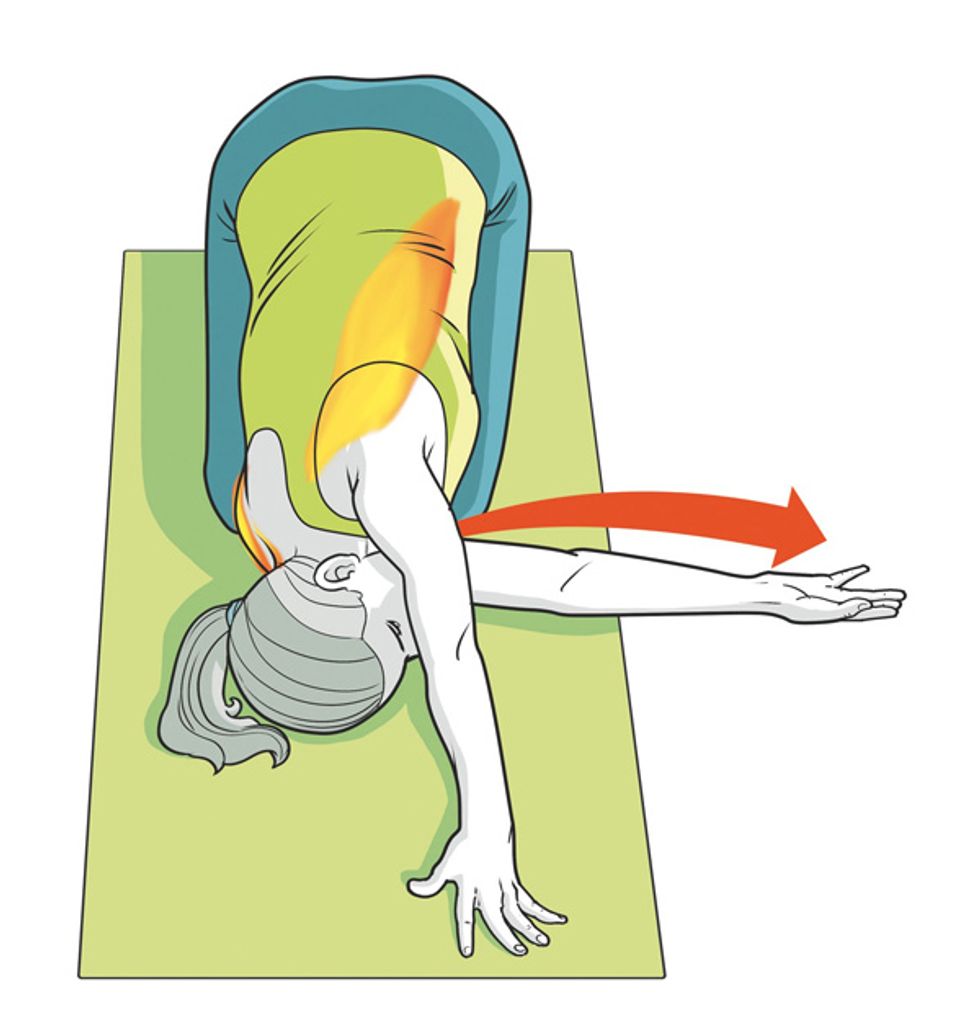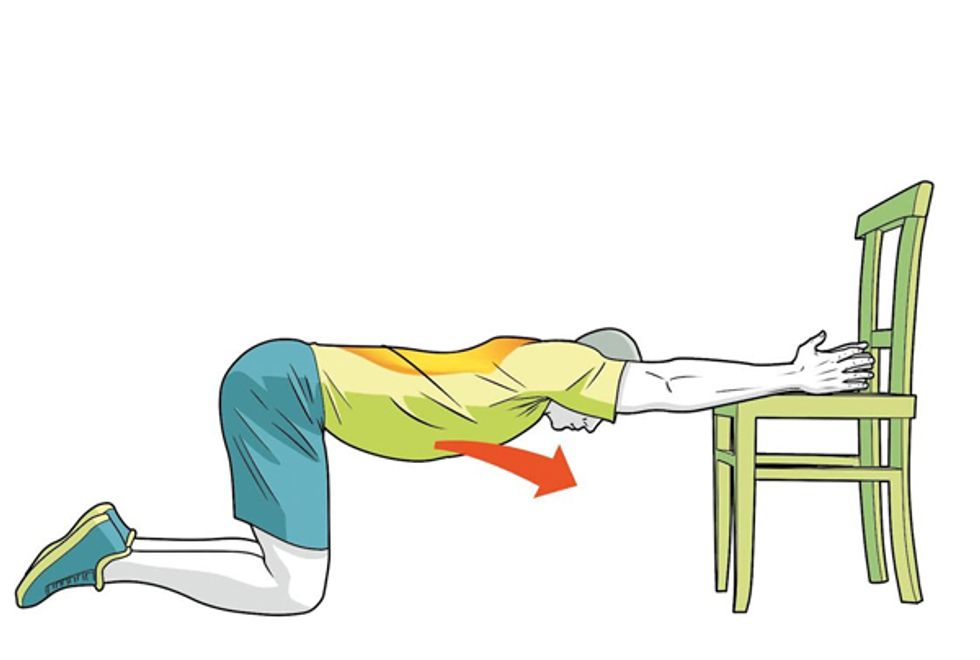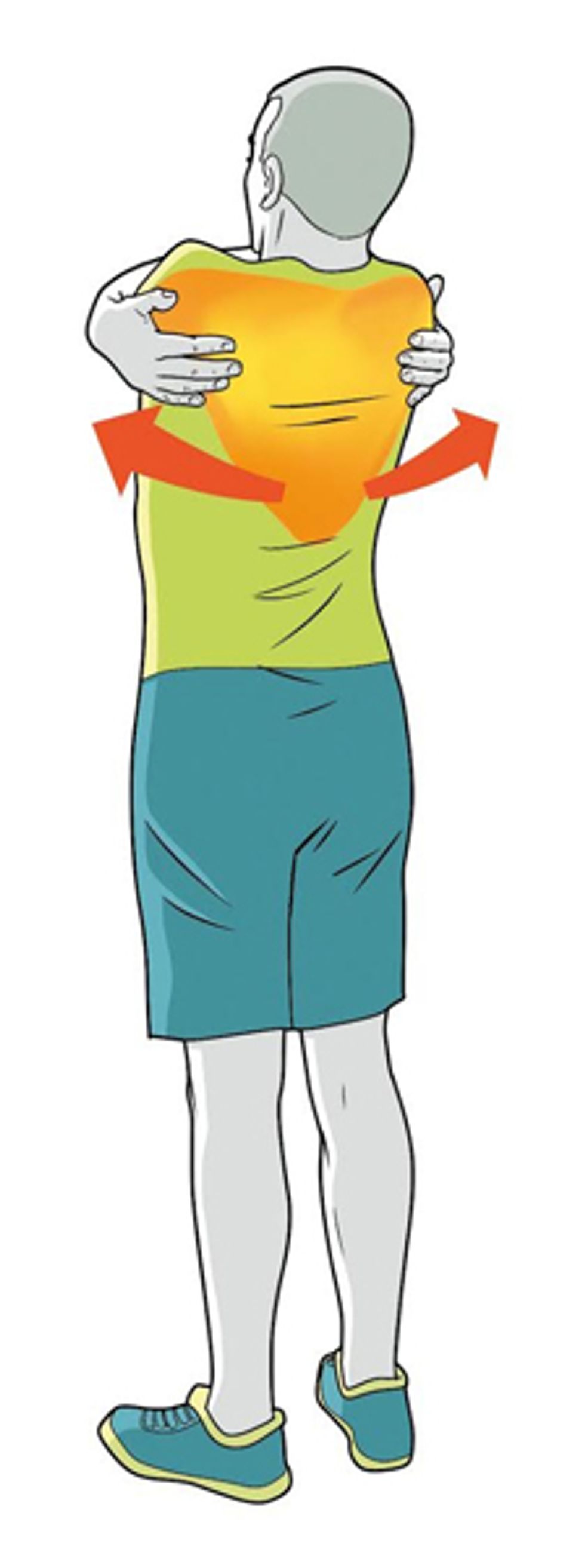If you spend much of your day hunched over a computer, chances are your shoulders are tight. It's also easy for shoulder tension to build when you're stressed.
Instead of going to bed with this pain and stiffness, get rid of it by stretching. Stretching is an easy way to ease your pain, de-stress and increase mobility. Regular stretching is essential for building flexibility, which helps muscles perform better.
Jessica Matthews, professor of kinesiology and yoga studies, and a registered yoga teacher, certified health coach, and senior adviser with the American Council on Exercise, is author of the new book, “Stretching to Stay Young."
She shared the three best stretches to do before bed to reduce shoulder pain.
Before you stretch, here are her tips to maximize the benefits of each stretch:
- Muscles are best stretched when they are warm, so create an evening ritual for yourself by enjoying a relaxing hot bath or shower before performing these stretches.
- Proper breathing plays an important role while stretching. Slow, rhythmic, mindful breathing in and out through the nose allows for enhanced relaxation. Your breath can also serve as a guide for how intensely you should be stretching. If you are restricting or holding your breath when performing a stretch, let that serve as a cue to reduce the intensity of the stretch to where you can once again breathe naturally and freely.
- This focused and refined attention to the breath offers another practical benefit with regard to properly performing and maximizing the benefits of each stretch. By counting the breaths you complete, you can help ensure you are holding each stretch for the appropriate time without needing to keep your eyes on the clock. Given that the average adult takes about 12 to 20 breaths per minute, try taking a total of at least 6 to 10 deep, controlled breaths while holding each stretch. This may be easier and more accurate than counting continuously to 30 or 60 seconds.
3 Stretches to De-Stress and Reduce Shoulder Stiffness:
1. Thread the needle

© Christian Papazoglakis/Illozoo
Good For: This stretch for the posterior deltoid (back of the shoulder) and rhomboids (upper back) can help relieve pain associated with rotator cuff tendinitis and shoulder bursitis.
Instructions:
1. From a hands-and-knees position, turn your head to the left and slide your right arm underneath your left arm, positioning your palm to face the ceiling.
2. Keeping knees stacked over hips, extend your left arm fully in front of your body and press your right forearm and upper arm (if accessible) firmly into the floor. Hold this stretch, then switch sides and repeat.
Bonus Form Tip:
- Use the ground as leverage when performing this stretch, keeping the forearm firmly pressed into the floor.
2. Kneeling Lat Stretch

© Christian Papazoglakis/Illozoo
Good For: This stretch for the latissimus dorsi, the large muscle of the back, can help prevent shoulder pain and discomfort, including minimizing the risk of rotator cuff injuries.
Instructions:
1. Kneel facing the seat of a chair or couch, resting knees hip-width distance apart on a folded blanket or towel for comfort.
2. Keeping your spine extended, hinge at the hips, creating a 90-degree angle with the body as you place your forearms atop the seat with palms facing one another. Hold this stretch.
Bonus Form Tip:
- As you hinge forward, keep your hips stacked over your knees and place elbows close to the edge of the seat while actively outstretching the arms.
3. Bear Hug

© Christian Papazoglakis/Illozoo
Good For: This stretch for the upper back (rhomboids and trapezius) is helpful if you experience discomfort in the shoulder blades from poor posture. It can also help minimize pain associated with shoulder issues like bursitis or frozen shoulder.
Instructions:
1. Stand with your feet hip-width apart and arms open wide.
2. Cross one arm over the other at the elbows, reaching hands over opposite shoulders as if giving yourself a hug.
3. Gently draw the shoulders forward. Hold this stretch.
Bonus Form Tip:
- Each time you repeat this stretch, try alternating the cross of the arms and notice if one side feels more comfortable than the other.
Source:Jessica Matthews, MS, E-RYT500, kinesiology professor, yoga teacher, wellness expert and author of Stretching to Stay Young.










